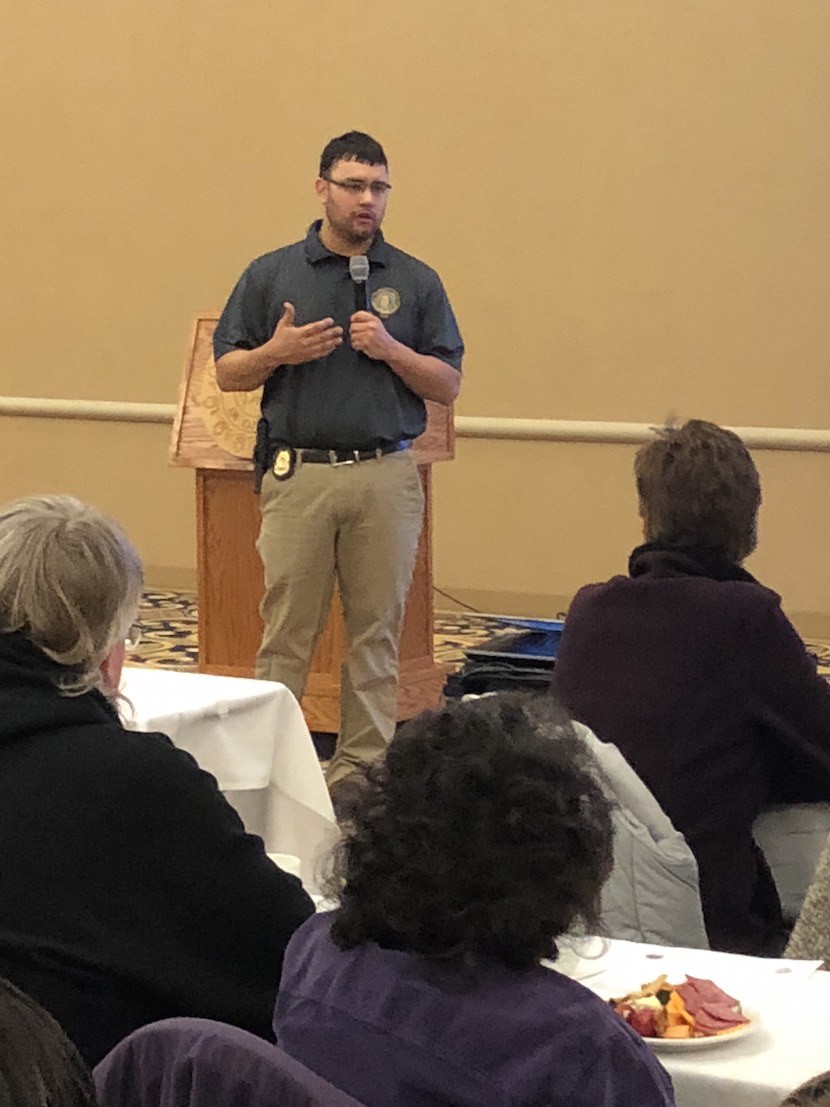
More than 75 community members gathered at Grand Casino Mille Lacs on February 21 to learn more about heroin and other opioids from Special Agent John Rogers from the Bureau of Indian Affairs’ Division of Drug Enforcement. His “opioids 101” presentation covered nearly every topic one could imagine related to opioids – from the street names like “Stuff” and “Boy,” to the paraphernalia used, to the signs of overdose.
John shared the most common story he hears about how the addiction began: “I was on pain killers for a legitimate reason.” In other words, the person became addicted to an oral drug prescribed by a doctor, and then sadly progressed to snorting, smoking, inhaling vapor, or injecting opioids.
“I’ve even heard of people injecting their eyes,” John said about the compulsive measures taken by opioid addicts.
Some of the most evident signs of addiction include:
• Presence of drug paraphernalia, ranging from burned spoons or foil to missing shoelaces
• Small containers with a white, powdery residue or brown, sticky substance
• Needle track marks
• Weight loss
• Frequently runny nose
• Infections or abscesses
• Uncontrollable itching
• Loss of menstrual cycle among women
As the BIA’s lead investigator assigned to Mille Lacs and other Minnesota reservations, John personally responds to drug crime tips received from this area. Anonymous tips texted to 847411 arrive to him from a scrambled phone number to protect the tipster’s identity. (Another option is the Mille Lacs Tribal Police Department’s anonymous line – 320-630-2458.)
Tribal Police Chief Sara Rice said, “Mille Lacs Tribal Police work with Agent Rogers almost daily to address drug crimes here and make connections that are crucial to identifying drug dealers who are ruining lives here and on other reservations around the state.”
Attendees asked John numerous questions, including where the drug traffic to Minnesota reservations is coming from. “Almost always Minneapolis,” he said, followed by an explanation that it came to Minneapolis from cities like Chicago and Detroit, and originated with a poppy plant in a warm, foreign climate before crossing U.S. borders as heroin.
Other questions covered topics ranging from the impact of per caps to the best prevention measures – including keeping medications locked up.
Miigwech to John and all who participated in this important event.
Minnesota Statute 604A.04 and .05, known as “Steve’s Law,” protects Good Samaritans from prosecution if they’re helping someone who is experiencing an overdose.